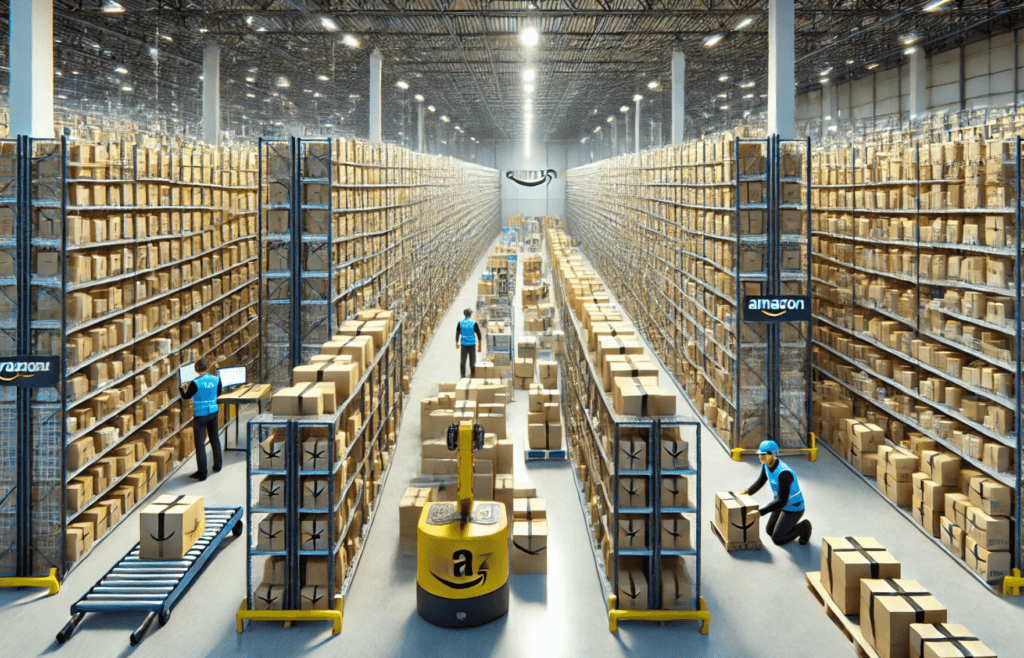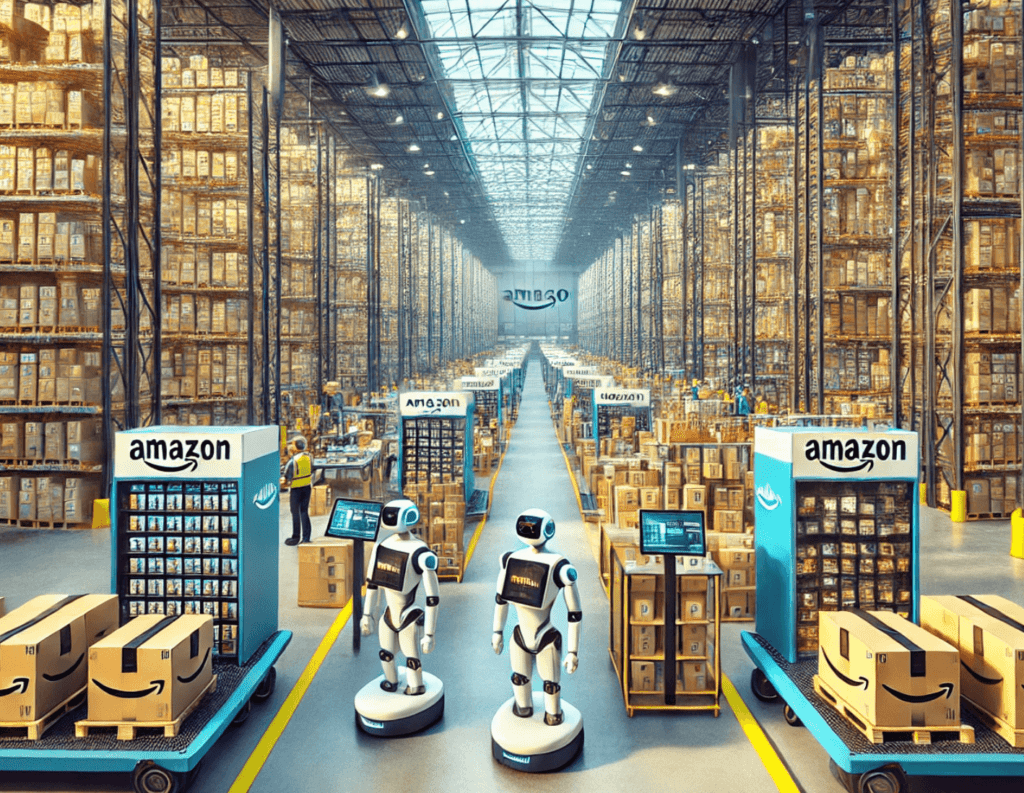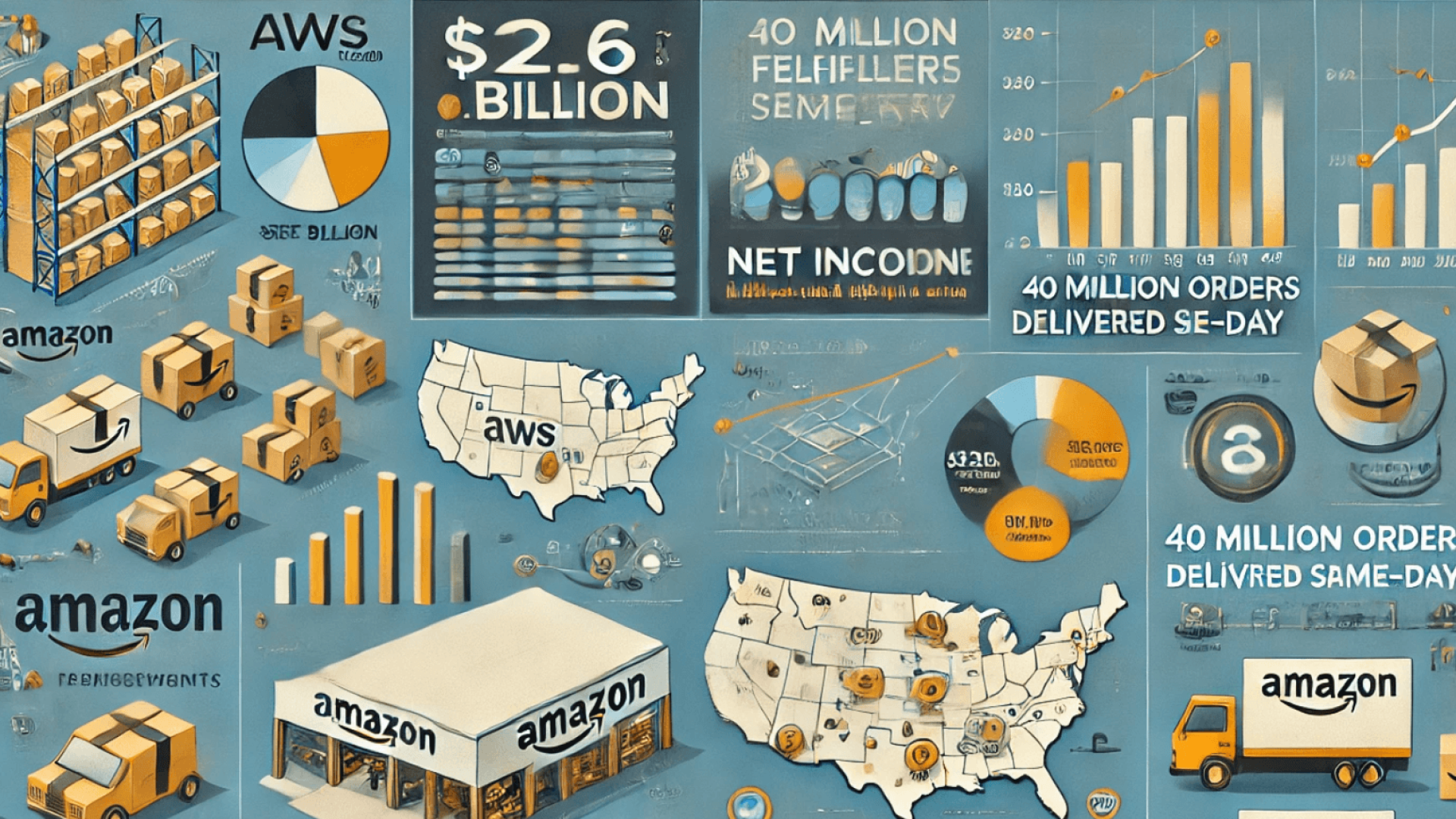Introduction
Amazon, once known as the “famously unprofitable” e-commerce giant, has transformed in recent years to become a powerhouse of profitability and investment. As the third quarter of 2023 closed, Amazon reported an astonishing $22.6 billion in capital expenditures alongside $15.3 billion in net income — both record highs.
This level of performance shows a shift in Amazon’s strategy, which now balances high profits with massive investments in future growth. As Fortune’s Jason Del Rey commented, “This is the Amazon everyone should have feared,” a company that continues to grow stronger, faster, and more efficiently, setting itself apart in the e-commerce and tech world.
But how did Amazon make this leap from thin profits to such extraordinary financial success? And what does its two-pronged focus on profitability and investment mean for the future of eCommerce and technology? Let’s dive into the factors that have positioned Amazon as a relentless leader in innovation and profitability.
Amazon’s Shift: From Profit vs. Investment to Profit and Investment
For years, Amazon’s financial strategy was characterized by a “pendulum shift,” alternating between focusing on profits and aggressive investments. According to CFO Brian Olsavsky, Amazon used to choose one or the other, rarely able to achieve both simultaneously. However, over the past several quarters, Amazon has been “doing both at the same time continually,” an approach that has enabled the company to drive revenue while setting the stage for long-term growth.
The Two Drivers of Amazon’s Success
- Amazon Web Services (AWS): The Profitable Backbone
One of Amazon’s biggest growth engines is AWS, its cloud computing division. AWS has become the backbone of Amazon’s profitability, accounting for 60% of its operating income. In the third quarter alone, a significant portion of Amazon’s $22.6 billion in capital expenditures went toward expanding AWS. The AI boom, combined with the increasing demand for cloud infrastructure, has allowed AWS to flourish.
AWS’s high margins and demand have solidified it as a cornerstone of Amazon’s profits. Calls for Amazon to separate AWS from its retail division, though prevalent, overlook the advantages Amazon gains from having AWS’s revenue support other parts of the business. AWS remains an essential asset, offering Amazon the financial flexibility to invest in its future without compromising profitability. - Amazon’s Retail Division: Increased Efficiency and Speed
Amazon’s retail division is the company’s other major contributor to profitability. While AWS offers high-margin revenue, Amazon’s retail operations have seen notable profitability improvements driven by a reduction in what the company calls “cost to serve.” Amazon’s focus on fulfillment network regionalization in the U.S. and the rollout of same-day and next-day delivery options have streamlined logistics, reduced expenses, and made the company more competitive.
Through these logistical improvements, Amazon has successfully increased its retail profitability. Its commitment to cutting costs while improving service speed has reshaped the retail landscape, giving Amazon a significant edge over other e-commerce competitors.

Breaking Down Amazon’s Investments and Profitability
Amazon’s capital expenditures and profits are not just numbers on a balance sheet. They represent strategic decisions that will define the company’s future.
- AWS Expansion and AI Investment
The largest slice of Amazon’s capital expenditures is directed toward expanding AWS, with particular attention to AI capabilities. As the AI industry booms, AWS provides essential services for businesses seeking cloud computing infrastructure, machine learning, and AI development tools. Amazon’s decision to keep expanding AWS demonstrates its confidence in the continued growth of the cloud market and its ability to capitalize on emerging AI-driven opportunities. - Streamlined Fulfillment and Delivery Systems
To keep fulfillment costs in check while growing unit sales, Amazon has adopted a regionalized fulfillment network. This approach involves optimizing product storage and shipping locations to reduce the distance items travel from the warehouse to customers’ doors. The result? Higher profit margins and faster delivery times.
Amazon has also focused on expanding its same-day and next-day delivery network. CEO Andy Jassy recently highlighted that more than 40 million customers took advantage of free same-day delivery, a 25% increase from the previous year. This delivery speed not only enhances customer satisfaction but also lowers Amazon’s costs, giving it a significant edge in the highly competitive eCommerce market.
- Marketplace, Advertising, and Subscription Revenue Streams
In addition to AWS and retail, Amazon has diversified its revenue streams through its marketplace, advertising, and subscription services. Amazon Marketplace, which includes third-party sellers, generates fees from merchants while expanding Amazon’s product offerings without additional inventory costs. Similarly, Amazon’s advertising services capitalize on its enormous consumer traffic by offering targeted ad solutions for businesses.
Real-World Impact: The Cost of Amazon’s Rise for Competitors
Amazon’s dual focus on profitability and investment is not only beneficial to the company but also places significant pressure on its competitors. Here’s how:
- Competitive Advantage in E-commerce Delivery Times
With same-day delivery options, Amazon has created an industry standard that’s challenging for other e-commerce players to match. The company’s same-day delivery capabilities have redefined customer expectations for e-commerce, setting a bar that is financially and operationally taxing for competitors to reach. - Dominance in the Cloud Market
AWS’s success has given Amazon a lead in cloud computing that is difficult for other companies to erode. With the rising demand for cloud infrastructure and AI tools, AWS continues to pull ahead of other providers. The profitability of AWS supports Amazon’s diversification strategy, which enables it to continually invest in innovations.

FAQ
Q1: Why is AWS so profitable for Amazon?
AWS has high-profit margins because cloud computing infrastructure has significant demand and relatively lower maintenance costs. As businesses shift to digital and need reliable cloud infrastructure, AWS becomes an indispensable tool, allowing Amazon to profit from the growing digital economy.
Q2: How does Amazon’s fulfillment network reduce costs?
By regionalizing its fulfillment centers and focusing on same-day and next-day delivery hubs, Amazon reduces the distance packages travel, lowering transportation and operational costs. This efficient network allows Amazon to deliver faster and more cost-effectively than competitors.
Q3: What impact will Amazon’s investment in AI have?
Amazon’s investment in AI positions AWS as a leader in the next wave of tech innovation. AI capabilities attract clients from numerous industries, from tech startups to established enterprises, thereby increasing AWS’s market share and Amazon’s overall profitability.
Conclusion
Amazon’s unprecedented profitability combined with record-breaking investment is a testament to the company’s relentless pursuit of growth and dominance. The Amazon of today is a powerhouse in both e-commerce and cloud computing, leveraging AWS’s profitability to expand its retail capabilities and invest in future innovations like AI. This dual approach — prioritizing both profits and long-term growth — has set Amazon apart from its competitors and redefined customer expectations across industries.
Amazon’s success presents a model for the future of global commerce, blending cutting-edge technology with customer-centered logistics. With an ever-growing fulfillment network and AWS’s ongoing expansion, Amazon’s future seems poised for even greater heights. For businesses aiming to succeed in a competitive landscape, Amazon’s strategy is a clear reminder of the power of relentless innovation and investment.
Call to Action
For businesses looking to harness the power of advanced logistics and thrive in Amazon selling, Elite Automation can help you navigate this complex landscape. Contact Elite Automation to start an Amazon business or start generating more eCommerce sales every month.



